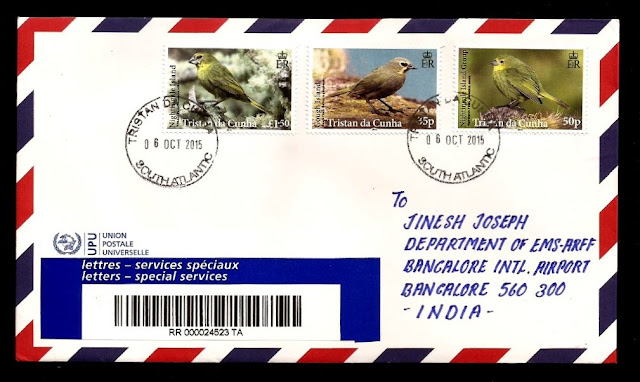Tristan da Cunha,
colloquially Tristan, is a remote group of volcanic islands in the south Atlantic Ocean. It is the most remote inhabited archipelago in the world, lying approximately 1,511 miles
(2,432 km) off the coast of Cape Town in South Africa, 1,343 miles (2,161 km) from Saint Helena and 2,166 miles (3,486 km) off the coast of
the Falkland Islands. The territory consists of
the inhabited island, Tristan da Cunha, which has a diameter of roughly 11
kilometres (6.8 mi) and an area of 98 square kilometres
(38 sq mi), and the wildlife reserves of Gough Island and Inaccessible Island and
the smaller, uninhabited Nightingale Islands. As of
October 2018, the main island has 250 permanent inhabitants who all carry British Overseas
Territories citizenship. The other islands are uninhabited, except
for the South African personnel of
a weather station on Gough Island. Tristan da Cunha is a British Overseas Territory
with its own constitution. There is no airstrip of any kind on the main island; the only way of
travelling in and out of Tristan is by boat, a six-day trip from South Africa.
Many of the flora and
fauna of the archipelago have a broad circumpolar distribution in the South
Atlantic and South Pacific Oceans. For example, the plant species Nertera depressa was first collected in Tristan da Cunha, but
has since been recorded as far away as New Zealand. Tristan is primarily known for its wildlife. The
island has been identified as an Important Bird Area by BirdLife International
because there are 13 known species of breeding seabirds on the island and two
species of resident land birds. The seabirds include northern rockhopper penguins,
Atlantic yellow-nosed
albatrosses, sooty albatrosses, Atlantic petrels, great-winged petrels, soft-plumaged petrels, broad-billed prions, grey petrels, great shearwaters, sooty shearwaters, Tristan skuas, Antarctic terns and brown noddies. Tristan and Gough Islands are the only known
breeding sites in the world for the Atlantic petrel. Inaccessible Island is also the only known
breeding ground of the spectacled petrel. The Tristan albatross is known to breed only on Gough and
Inaccessible Islands: all nest on Gough, except for one or two pairs which nest
on Inaccessible Island.
The endemic Tristan thrush, also known as the "starchy", occurs
on all of the northern islands and each has its own subspecies, with Tristan
birds being slightly smaller and duller than those on Nightingale and
Inaccessible. The endemic Inaccessible Island rail,
the smallest extant flightless bird in the world, is found only on Inaccessible
Island. In 1956, eight Gough moorhens were released at Sandy Point on
Tristan, and have subsequently colonised the island. No birds of prey breed on
Tristan da Cunha, but the Amur falcon occasionally passes through
the area on its migrations, thus putting it on the island's bird list. Various
species of whales and dolphins can be seen around Tristan from
time to time with increasing sighting rates, although recovery of baleen
whales, especially the southern right whale, were
severely hindered by illegal whaling by the Soviet Union in the aftermath of the 1960 volcanic eruption.
The subantarctic fur seal Arctocephalus
tropicalis can also be found in the Tristan archipelago, mostly on Gough
Island.
In 1946, labels showing penguins and the
currency being potatoes were issued. The 4 potatoes red stamp was included in
the miniature sheet issued in 1979 to commemorate the death centenary of Sir Rowland Hill. The
first stamps of Tristan da Cunha were issued on 1 January 1952and consisted of
twelve stamps of Saint Helena overprinted TRISTAN DA CUNHA. In 1954 a definitive set
depicted various themes of the islands.
These covers posted on October 6, 2015 and reached in South Africa on November 13. After that there was no information regarding its status while tracking. Finally I received them in perfect condition on April 15, 2016. When I tracked the numbers, The TA tracking number still used for its tracking instead of South African barcode. The envelopes reached in Kolkata GPO as Surface Air Lift, then reached in Bangalore also as SAL on April 15.





No comments:
Post a Comment
Note: only a member of this blog may post a comment.